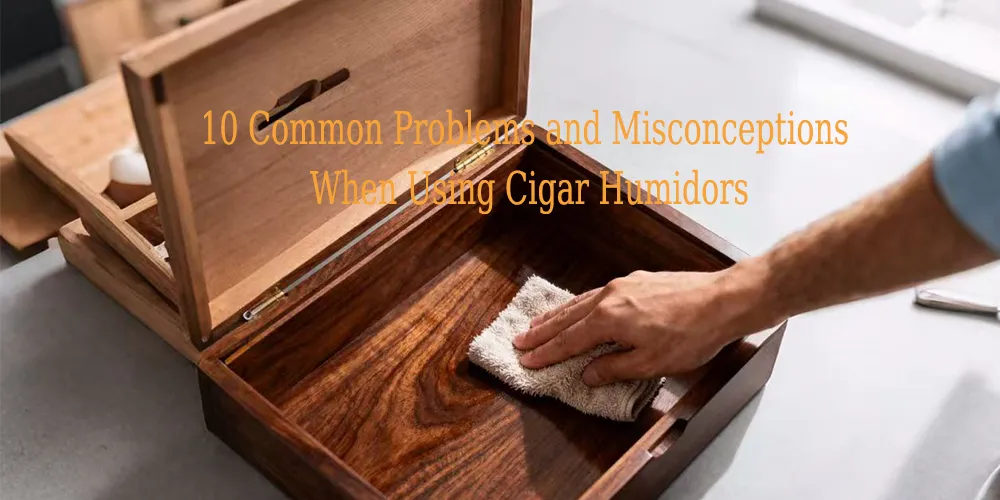-
Arabic
-
English
-
French
-
German
-
Italian
-
Spanish

Arabic

English

French

German

Italian

Spanish

Upon receiving your new humidor, you're eager to put your cigars in immediately. The dry wooden interior of the humidor will absorb moisture from the cigars, causing them to dry out and crack.
The Right Way: Seasoning is essential. Use distilled water or a high-RH Boveda bag to allow the wooden interior to absorb moisture until the internal humidity stabilizes at the target value (e.g., 75%). This typically takes several days to a week.
Trusting the initial reading on a new hygrometer. Most hygrometers (especially analog models) have factory deviations, which can cause you to keep your cigars at the wrong humidity.
The Right Way: Calibrate your hygrometer using the "salt test" method and remember the deviation, or purchase a calibrated digital hygrometer.
Minerals and impurities in tap water can create scale, clog the humidification mechanism, and breed bacteria and mold, contaminating your cigars.
The Right Way: Always use distilled water, which is pure and free of impurities.
Excessive humidity is a major cause of mold in cigars. It can also cause cigars to be difficult to light, burn unevenly, and have a bitter taste.
The Right Way: Maintain humidity within the golden range of 65%-70%, adjusting it according to personal taste.
Focusing solely on humidity, you overlook the temperature of the humidor's environment. High temperatures (over 24°C/75°F) activate tobacco beetle eggs, which can eat away at the humidor. Temperature fluctuations can also cause drastic changes in humidity.
The Right Way: Keep the humidor in a cool, dark, and stable location between 18°C and 21°C.
Storing strong-flavored cigars (such as Maduro) and lighter cigars (such as Connecticut) close together for extended periods of time. The cigars breathe, and the strong flavors can transfer, affecting the delicate flavor of the lighter cigars.
Corrective Action: Store cigars of the same type together, or use separate sealed bags/boxes to separate them.
Each opening and closing causes a sudden loss of the stable temperature and humidity inside, which takes a long time to recover and is detrimental to the aging of the cigars.
Correct Action: Minimize the frequency of opening and closing, and open the humidor quickly after deciding which cigar you want to take.
Cramming the humidor beyond its designed capacity will restrict air circulation, resulting in uneven humidity (wet in some areas, dry in others), and potentially damaging the precious cigar wrappers.
Correct Action: Leave adequate space to ensure free air circulation.
Don't take it seriously if you notice water beading on the glass or interior walls of the humidor. This is a sign of mold! Condensation is often caused by a sudden drop in temperature (such as from direct air conditioning). A humid environment is a breeding ground for mold.
The Right Way: Immediately wipe away any moisture and move the humidor to a more stable temperature location, avoiding extreme temperature fluctuations.
Fail to check and maintain it after setting it up. The humidifier will dry out, the seal will deteriorate, and the hygrometer will become inaccurate, ultimately causing cigars to be damaged without you noticing.
The Right Way: Check the humidity reading and the condition of the humidifier regularly (e.g., weekly), and perform a thorough cleaning and reinitialization at least once a year.